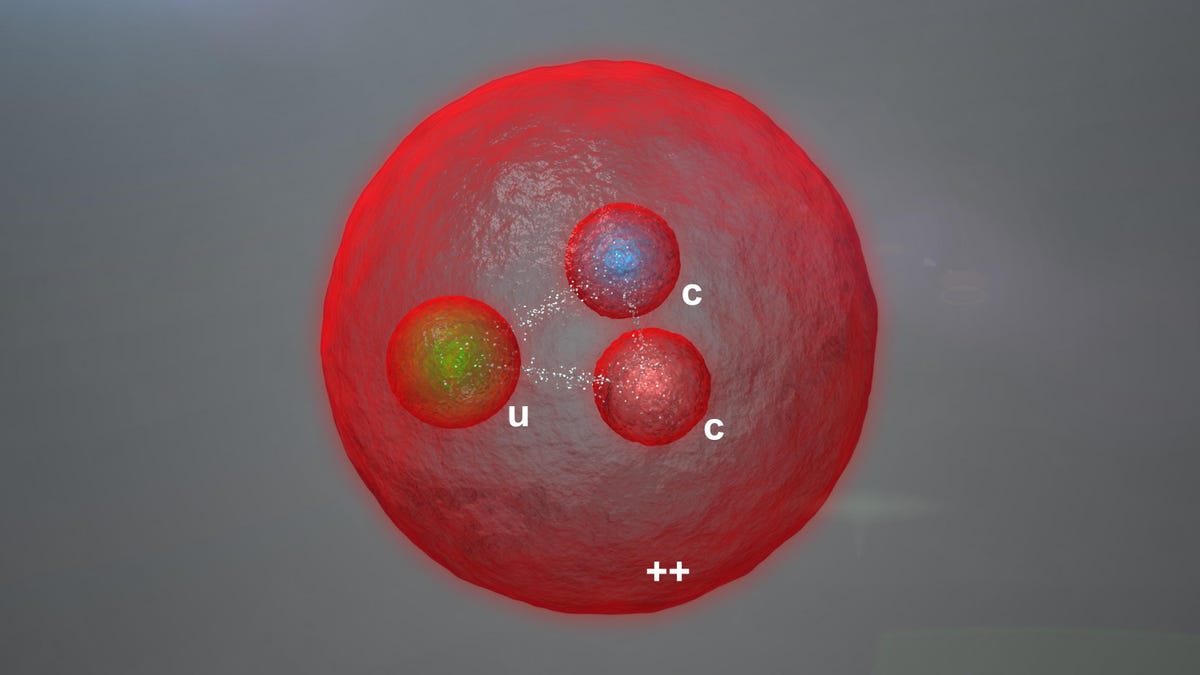A double dose of charm may help hold our universe together
Scientists at the Large Hadron Collider have detected a new kind of particle that may provide new insights into the "glue" of nature.

Researchers smashed protons together to find this new baryon.
Researchers at the Large Hadron Collider have found a new subatomic particle that could provide clues about one of the forces that holds much of the stuff in the universe together.
The new particle is a baryon, which is a family of composite particles that also includes the better-known proton, containing two charm quarks and two up quarks. Quarks are an even smaller type of elementary particle.
This description likely does very little to help most humans understand the significance of this new discovery. What those of us who aren't particle physicists need to know is that the doubly-charmed quark action going on in this new baryon makes it unusually heavy, as baryons go.
"Finding a doubly heavy-quark baryon is of great interest as it will provide a unique tool to further probe quantum chromodynamics, the theory that describes the strong interaction, one of the four fundamental forces," said Giovanni Passaleva in a release Thursday. Passaleva is a spokesperson for the experiment at the LHC that produced the new particle for a fraction of a second by smashing protons together.
The strong interaction is literally one of the basic forces of nature that holds the nucleus of atoms (and by extension, pretty much everything) together. What's more, most of the matter that we interact with in life is made up of baryons, so finding a new variety could lead to new insights into, basically, the glue of all matter.
"In contrast to other baryons, in which the three quarks perform an elaborate dance around each other, a doubly heavy baryon is expected to act like a planetary system, where the two heavy quarks play the role of heavy stars orbiting one around the other, with the lighter quark orbiting around this binary system," added Guy Wilkinson, former spokesperson for the experiment team.
The research team presented their finding at a conference on high energy physics in Italy Thursday. If you want to dig in to all the charming quark data behind it, you can check out their research paper (PDF), which has also been submitted to the journal Physical Review Letters.
Crowd Control: A crowdsourced science fiction novel written by CNET readers.
Solving for XX: The tech industry seeks to overcome outdated ideas about "women in tech."

